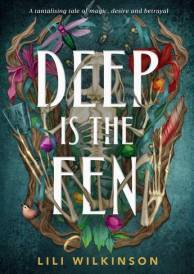Sabina Read INSTAvention Interview

Sabina Read INSTAvention Interview
#latergram: Whether it's a spectacular sunrise, a night out with friends or a -#tbt' (throwback Thursday), one in five respondents (19.5 per cent) have waited to post an exciting photo, saving it for later when doing something less exciting. That number more than doubles (40 per cent) when it comes to millennials.
As the nation credited with coining the term -selfie', it's no surprise Australians are obsessed with ensuring they put their best face forward when it comes to social media. New research about mobile behaviour from mobile service provider, amaysim, reveals nearly half (46.5 per cent) of users uploading an image to social media at least once a week.
According to the research, half of Australians (49 per cent) are cropping, editing and filtering their photos before they post them in order to make them more socially pleasing. When it comes to 18-24 year olds who have grown up on social media, that number jumps by over a quarter to 76 per cent. Even great photos aren't safe if they aren't popular, with almost one in five people admitting to deleting photos that don't get enough likes. Half an hour is all it takes some to decide if a photo is worthy of keeping its coveted spot in the gallery.
Sabina Read, psychologist and social commentator, explains people have always tried to up keep up appearances, now we're just doing it online with social media instead of at the neighbourhood BBQ.
'Instagram is one of the most popular social platforms in Australia, with over 5 million monthly users looking at and uploading photos on their smartphones," said Read.
'Image-led apps like Instagram and Facebook clearly show how we now use social media to seek connection, but also to garner acceptance and approval. We're able to share more about ourselves than ever before, but this can potentially increase the pressure we feel to reveal only the perfected glossy parts of life.
'Our feeds are filled with carefully filtered snaps of polished toes overlooking sparkling turquoise seas and smiling faces that often resemble a magazine shoot rather than the normal highs and lows that typically pepper real human life. Wouldn't it be great if we felt comfortable posting more realistic images of our daily experiences and still got the likes we desire from our mates?"
Australians are taking notice, and giving the thumbs down to this behaviour, with almost half (44.8 per cent) of respondents saying they're tired of seeing people they follow on social media post images designed to get likes. It seems people are increasingly starting to crave genuineness, with one third (34 percent) saying they would prefer to see photos that are more true to real, everyday life.
'Technology advances, like the fact that we all now have cameras in our pockets thanks to smartphones, and the availability of affordable mobile data from companies like amaysim have provided us with the opportunity to instantly upload and share truckloads of images and videos," said Ged Mansour, amaysim Head of Communications. 'But as a result it's easier than ever to be our own editor and publisher, taking sandpaper to our life's rough edges when they might just be the most intriguing parts.
'As a -no BS' telco, we love the warts n' all aspect of social media that really does make people laugh out loud. Seriously, what's more entertaining – another filtered-to-perfection holiday selfie where you can't see the scenery or a totally unedited photo of a hotel booking gone wrong?"
'Regardless of what you choose to upload, we offer heaps of data with amaysim's UNLIMITED plans, so you can share the pics and videos you want without any worries."
Say cheese!: Keep your eyes open: When it comes to getting a good photo, we tend to look more at ourselves than others, especially those aged 18-24. Almost a quarter (23.8 per cent) admit to posting a photo that they look great in, even if their friends don't (eyes closed, blurry, out of focus).
It's only natural: No need to spend all that time editing. Almost a quarter (22.6 per cent) of Aussies would like to see more unedited, natural snaps of their friends on their social feeds.
Interview with Sabina Read
Question: Can you talk about the results of the amaysim survey?
Sabina Read: amaysim's research found that we are sharing more than ever before on social media, however this growing trend has also delivered an increase in filtering behaviour with 49% of Aussies editing their posts. In particular, a staggering 76% of 18-24 year olds find ways to perfect their photos before sharing them.
Question: How often are users posting photos to their social media pages?
Sabina Read: Findings from the amaysim research shows that nearly half (46.5 per cent) of us upload an image to social media at least once a week.
Question: What surprised you most about the study results?
Sabina Read: I was surprised to see that 1 in 5 people admitted to deleting photos if they do not receive the number of likes they desire. This behaviour indicates that one of our primary drivers in posting images is to gain approval and feedback as opposed to simply share with our online mates.
Question: Why are many Instagram users craving likes?
Sabina Read: Likes on Instagram and other social media platforms are perceived to equate with some level of social validation and empathy. A flesh-and-blood hug or high-five from a pal feels great, but an online like helps us to feel a sense of connection and belonging, both basic needs, which we are all hard-wired to seek.
Question: Why do you think we've turned from status to images?
Sabina Read: It is said that a picture tells a thousand words, however perhaps it's a case of buyer beware, because as amaysim's research shows, many of the images we see don't give the full story or accurately portray the way someone feels or the life they lead.
Question: What message would you like to give Australians about their addiction to posting glamourous images?
Sabina Read: We all want to feel good, but healthy typical humans are designed to experience the whole gamut of emotions from love to pain, and excitement to boredom. amaysim's research discovered that more than a third of Aussies want to see more authentic images posted and I support them! In posting images of the perfect life we can create a sense of not being enough, thereby creating the opposite result of the acceptance and belonging we so naturally desire.
Question: What do most Australians want to see on their Instagram feeds?
Sabina Read: According to amaysim's research, Aussies are starting to want genuine photos that reflect the everyday reality of people's lives. They're tired of seeing over-edited photos that they know don't represent the lives of their friends, they want to see the unedited, natural highs and lows of real life.
Question: What do you want to see on your Instagram feed?
Sabina Read: I want to see smiles and tears, intimacy and loneliness, happy families and screaming kids, summer fun as well as annoying pimples! And sometimes I'd love to see baked beans for dinner instead of three courses of foam sprinkled with fancy garnish! Although it's contrary to what some people believe, sharing our flaws and vulnerabilities invites our mates to do the same, thereby creating the potential for creating more meaningful connections, both online and perhaps in real life too.
Interview by Brooke Hunter
Have You Seen This?
MORE











